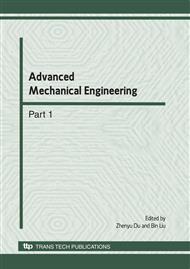p.770
p.776
p.780
p.785
p.789
p.794
p.800
p.805
p.809
Uncertainty Propagation Analysis for Turbine Cooling Blade Multidisciplinary Design
Abstract:
This paper presents an uncertainty propagation analysis method using the Convex Model Theory (CM) for turbine cooling blade multidisciplinary design. Convex Model is used to describe the design variables’ uncertainty, and it’s propagation equation is derived. Monte-Carlo(MC) method and Convex Model Theory (CM) are all employed to calculate target variable’s variation. Result shows that CM method is more time-saving than MC method. First order second moment method is employed to calculate the reliability of target variable’s variation to evaluate the difference of the results of the two methods. As the actual probability density function of design variables is unknown, so reliability analysis considers different probability density functions. Response surface method is used to construct the approximation of the multidisciplinary analysis. Reliability analysis result shows that CM method keeps the same accuracy with MC method.
Info:
Periodical:
Pages:
789-793
Citation:
Online since:
June 2010
Authors:
Price:
Сopyright:
© 2010 Trans Tech Publications Ltd. All Rights Reserved
Share:
Citation:


